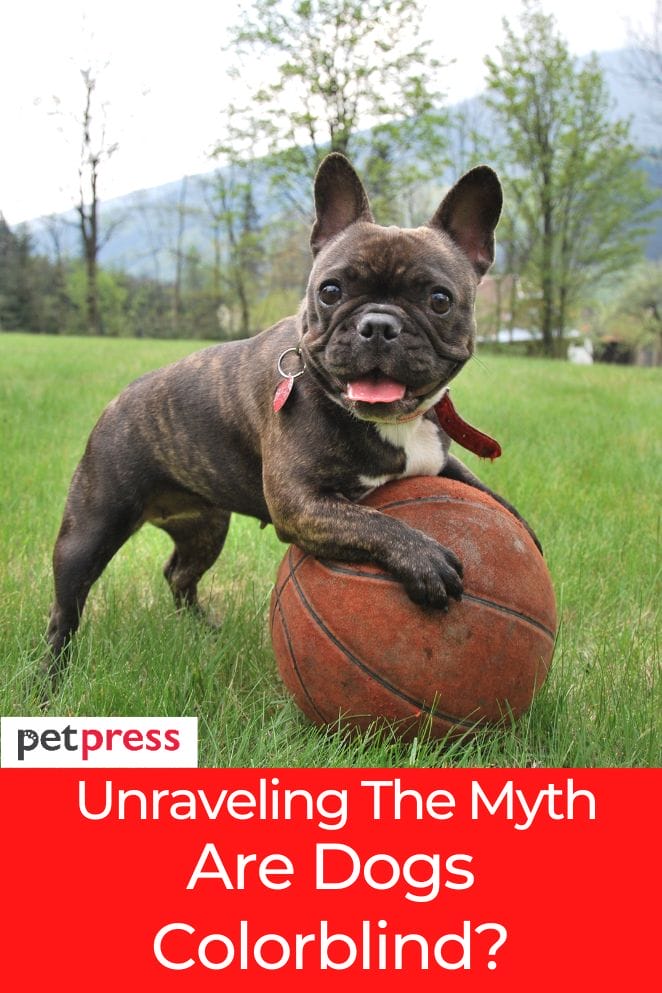
For quite a long time, there was a prevailing belief that dogs saw the world solely in black and white.
However, recent scientific research has upset this misguided judgment, uncovering a captivating truth: our canine companions really do have the capacity to see color yet in an extraordinary way contrasted with humans.
In this article, we dive into the intriguing realm of canine color vision, unraveling the secrets of how canines see the world and the mean it has on their way of behaving.
Get ready to be amazed as we explore the intriguing nuances of their visual perception and gain a deeper understanding of our four-legged companions.
How dogs see color
While humans have three color receptors in their eyes, canines have just two.
This distinction brings about a type of color vision called dichromatic vision, which allows dogs to see a limited scope of colors.
Unlike our vibrant and various color ranges, canines’ color perception is similar to the size of blues, going from dim to light, with hints of yellow and gray interwoven.
To put it simply, let’s imagine a captivating sunset. As we absorb the radiant shades of oranges, pinks, and purples, canines would see a different interpretation.
Their view would include varying shades of blues and grays, with subtle bits of yellow.
In spite of the fact that their perception might contrast, it doesn’t decrease the beauty of the world for our beloved dog companions.
As a matter of fact, their extraordinary visual perspective adds a bit of miracle and interest to their everyday experiences.

How do dogs see humans?
Because of their interesting color perception, dogs don’t have a similar ability as humans to recognize different skin tones.
To canines, all people might show up somewhat different in color because of the varieties of clothing and accessories that reflect light in an unexpected way.
However, dogs have alternate approaches to recognizing people that go beyond viewable prompts.
They can perceive people based on facial expressions, body shapes, and, even their profoundly evolved sense of smell.
While canines may not depend on color to recognize individuals, their sharp sense of smell allows them to differentiate people in view of their special fragrance.
This surprising olfactory ability provides them with an unmistakable approach to recognizing and remembering individuals.
It’s a reminder of the extraordinary sensory world dogs possess, where scent plays an important part in their perception and understanding of their current circumstance.
In this way, while dogs may not see skin tones similarly as people do, they have a scope of other perceptual tools that enable them to recognize and connect with people in their own distinctive and surprising way.
How dog color vision affects their behavior?
Acquiring knowledge of how canines see color allows us to gain a deeper understanding of their way of behaving and interactions with the world.
Have you at any point asked why your canine struggles to find a red ball in a field of green grass?
The response lies in their color vision.
To dogs, red shows up as a shade of dark, making it mix in with the surrounding plant life, which also seems dim to them.
This special color perception essentially affects how dogs explore their environment.
Rather than depending intensely on color, canines focus on brightness and contrast to recognize objects.
This clarifies their ability to spot a fast-moving squirrel from a distance or their attraction towards toys that stand apart with sharp contrasts against their surroundings.
It’s essential to take note that a canine’s dichromatic vision doesn’t hinder its survival or decrease its happiness.
Dogs make up for their limited color perception with their remarkable sense of smell and intense hearing, which far outperforms our own abilities.
They experience their reality in a way that is not the same as ours, but similarly rich and complex.
By perceiving and valuing the nuances of a dog’s visual experience, we can strengthen the bond we share with our four-legged companions and ensure their current circumstance is enhanced with stimuli that take care of their interesting sensory abilities.

Conclusion
Despite the fact that canines’ color perception is different from ours, there isn’t absent any trace of richness and variety.
They may not see the full spectrum of a rainbow, but rather they give their own spectrum of pleasure, love, and steadfastness into our lives.
It’s a reminder that the connection between people and canines rises above the boundaries of color perception and addresses a deeper connection in light of friendship, compassion, and mutual understanding.
- Essential Oils Safe for Cats: What Every Pet Owner Needs to Know - May 23, 2025
- Herbal Supplements for Cats: A Natural Approach to Cat Wellness - May 21, 2025
- Signs of a Healthy Cat Coat: What Every Cat Owner Should Know - May 19, 2025


GIPHY App Key not set. Please check settings